
Thousands of space enthusiasts and spectators, as well as around 400 credentialed journalists from around the globe, are flocking to Florida’s “Space Coast” this weekend to witness what will become the world’s most powerful operational rocket, the Falcon Heavy, launch on its maiden voyage no-earlier-than (NET) next week. Counting down to a liftoff attempt on Tuesday, February 6, SpaceX’s new heavy-lift launcher will conduct a flight test to prove it works as intended, before beginning operational missions for paying customers soon after.
The 230-foot-tall, triple-barreled booster is one of the most highly-anticipated rockets in history, and could prove to be quite a game changer, seeing as SpaceX advertises it as being able to launch twice the payload of the next most powerful rocket, the ULA Delta-IV Heavy, at 1/3 the cost.
FOLLOW OUR FALCON HEAVY LAUNCH TRACKER FOR DAILY UPDATES & LIVE COVERAGE ON LAUNCH DAY!
America’s newest rocket first rose to vertical atop historic launch pad 39A at KSC on Dec 28, which was followed by weeks of work on the rocket including various tests, fit checks, propellant loading and troubleshooting issues before it roared to life for the first time for a successful Wet Dress Rehearsal and Static Test Fire of its 27 Merlin engines on Jan 24.
SpaceX is aiming to launch at 1:30pm EST Tuesday, followed by landings of all three rocket cores. The two side cores will return to Cape Canaveral for touchdowns on Landing Zone 1 and 2 (LZ-1 / LZ-2), the center core will land on an offshore SpaceX droneship.
Both side cores are actually already flight-proven too, having previously launched the Thaicom-8 and NASA CRS-9 missions. But the central core is new, built specifically to withstand the unique stresses and environment of launching with three rockets strapped together while firing 27 engines.
Where to Watch
Many hotels throughout Brevard County have been sold out for weeks, and while there are many launch viewing locations available for the public to choose from, some may definitely be better than others depending on what you’re looking for.
- The Kennedy Space Center Visitor Complex is offering several on-site viewing options for the general public, but the best views sold out within an hour of going on sale days ago. There is one other viewing package still available though, from the Visitor Complex Rocket Garden, complete with launch commentary and a livestream of the launch. It’s 7.5 miles from the launch pad, so you’ll get a good chest-rattling experience, but you won’t see the rocket until after it is off the pad.
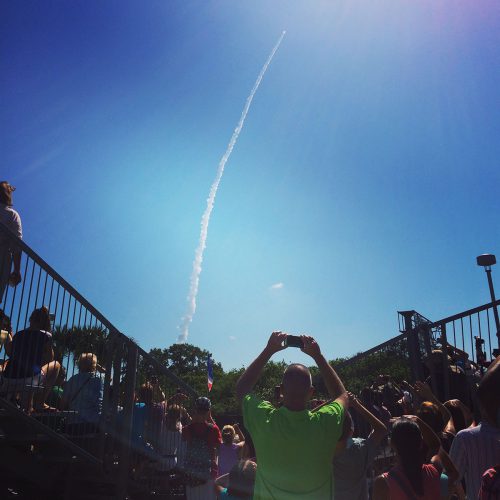
Of course, being at KSCVC provides plenty of benefits such as amenities, food, drinks, bathrooms and etc, not to mention plenty of opportunities to do a lot more that watch the launch. People can meet astronauts, visit shuttle Atlantis, ride the Shuttle Launch Experience, tour the Heroes and Legends exhibit and visit the U.S. Astronaut Hall of Fame, learn about NASA’s next steps in human space exploration at the NASA Now exhibit and so much more.
- One of the best off-site viewing options—at least visibility wise for both launch and landing—is from Route 401 behind Port Canaveral (coordinates 28.419 N, 80.630 W), which offers a mainly unobstructed view of the rocket on 39A at 13 miles away, while also offering a view of landing at 6 miles away. One thing to keep in mind is the fact that Route 401 behind the port does not leave room for many; space is very limited along what is roughly a one-mile stretch of roadway at the water’s edge, but the view—particularly for photographers—is worth arriving early for, as it is first-come, first-serve.
- The 528 Causeway just west of the port works too; it offers roughly the same view, and there is plenty more space for crowds to park off the highway for an unobstructed view across the Banana River.
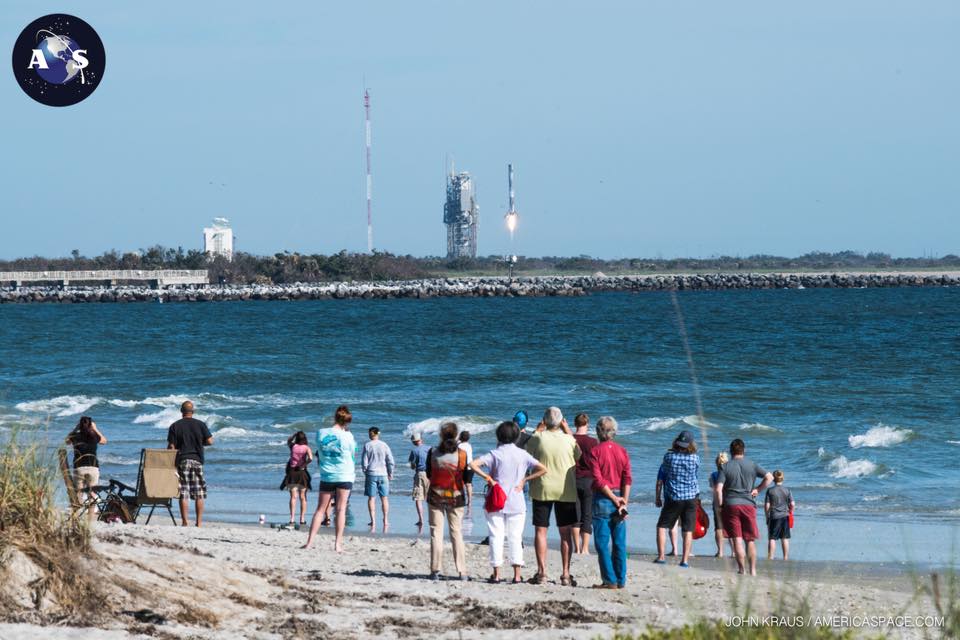
- Nearby Jetty Park and the beach just south is another option if you’d rather see both boosters landing – 14 miles from 39A, 6 miles from LZ-1 / LZ-2. But you won’t see the rocket until after it lifts off. And while Jetty Park has the benefit of facilities like bathrooms, it also has an entrance fee per vehicle and will close once they reach capacity.
The basic rule for any off-site viewing is ARRIVE EARLY!
- The closest public view for launch will be Playalinda Beach on Canaveral National Seashore (coordinates 28.655N, 80.632 W), at just 3.5 miles away from 39A. This will give spectators a really bone-rattling experience of launch, but it’s also 12.5 miles away from LZ-1 / LZ-2.
The park charges an entrance fee per vehicle, and they WILL close access to the park about an hour before launch time; no going in or out until it launches or scrubs at that point. Bathrooms are extremely limited, and if you get hungry or thirsty you’ll be on your own, so plan accordingly and again, arrive early.
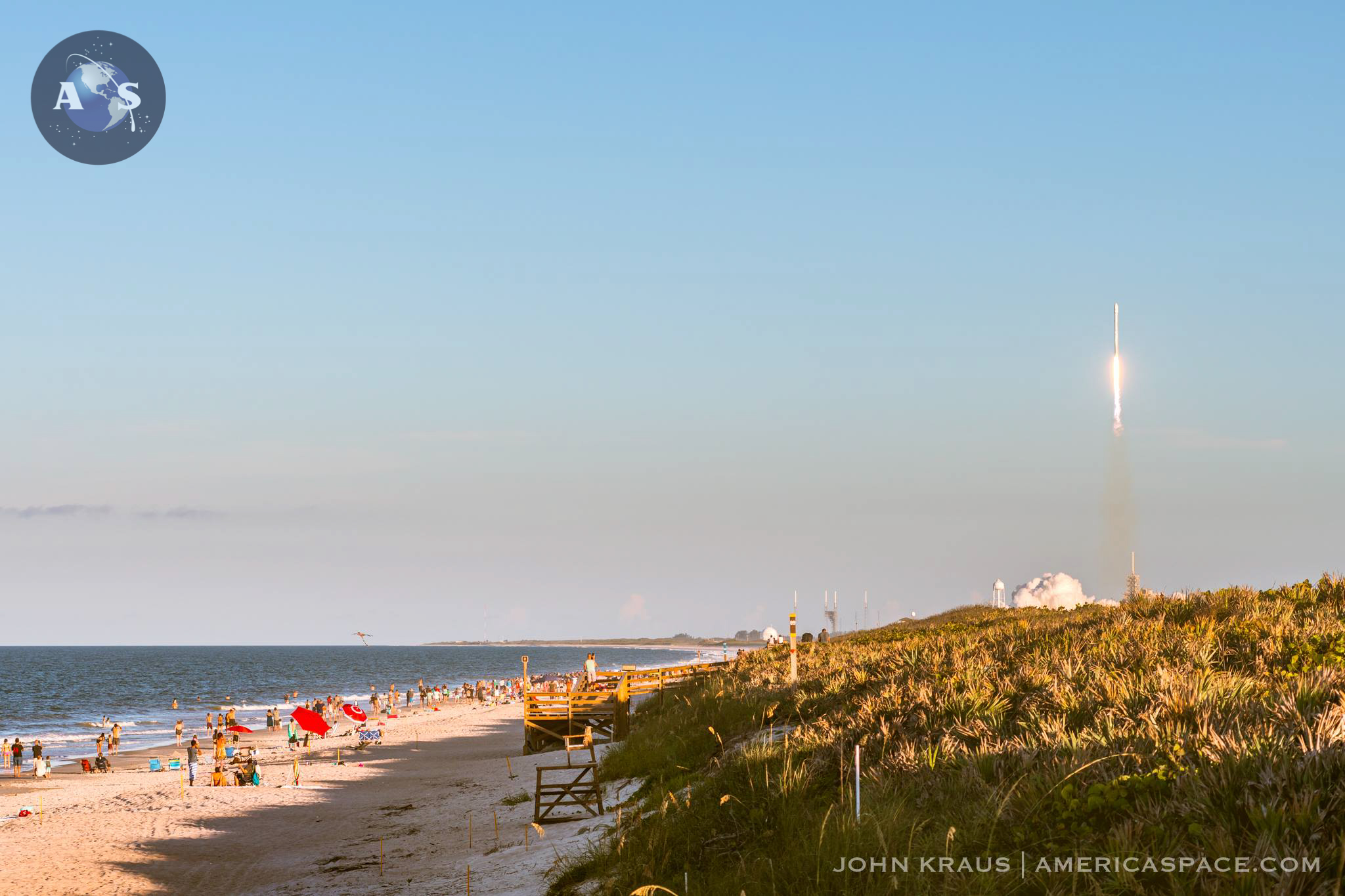
Keep in mind the Park Service is considering shutting down certain areas of the beach too, and the vista points along the road will be blocked off. The angle will also be extremely backlit as well, and phone service can be hit and miss depending on your carrier.
- Another option for many will be along HWY-1 in Titusville, which is located west of KSC. Space View Park was always particularly popular for many to watch the space shuttles launch from, so it’s a safe bet it will be too for Falcon Heavy flying off the same pad 39A. But any view in Titusville will be 12-13 miles from launch, and a further 17.5 miles from LZ-1 / LZ-2.
At the north side of town is the Max Brewer Bridge and Parrish Park (coordinates 28.620946, -80.797751), both offering a great view across the water of the space center.
Titusville also offers benefits such as plenty of food, drinks, fuel, open water views and even some riverside restaurants.
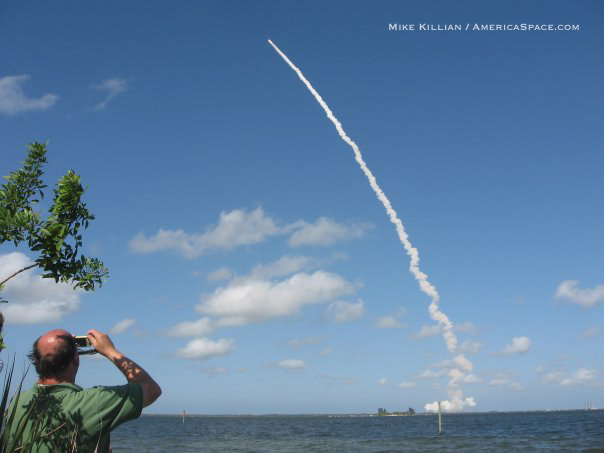
One of our favorites is Shiloh’s Steak & Seafood, with its window and outside deck views overlooking the space center; really great food and reasonable prices. Keep in mind they do not accept reservations on launch days, it is first come, first serve.
Make sure to visit both the American Space Museum & Space Walk of Fame too, you’ll be glad you did, as there is so much history preserved for any space geek to drool over, complete with rare autographs, flown hardware and many rare artifacts preserved for future generations.
Another great location for launch, especially to avoid crowds and be surrounded more by nature, is to find a place on the Merritt Island National Wildlife Refuge. Some people, for example, will bring kayaks and paddle out from Haulover Canal (coordinates 28.730857, -80.761272) to Mosquito Lagoon, which offers a really great unobstructed view of both pads 39B and 39A at about 12 miles away.
Launch
Falcon Heavy’s launch window is open from 1:30pm EST – 4:00pm EST, so it can fly any time in that window. Once it does, it will track due East, taking a 90 degree azimuth and deploying Elon’s PR stunt, a ‘modified” midnight cherry Tesla roadster, and sending it on a hyperbolic orbit while playing “Space Oddity” – simply because they can.
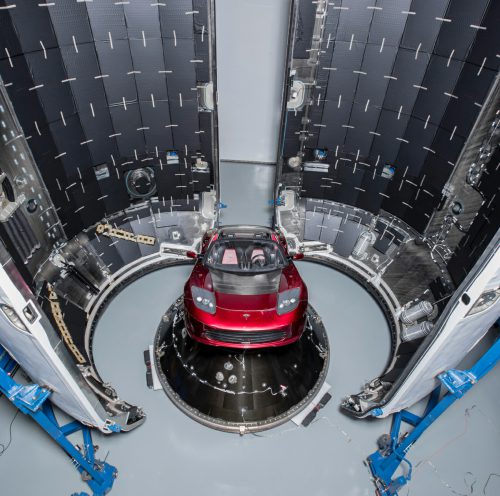
The Tesla is serving as a “mass simulator”, according to the Commercial Space Transportation License issued to SpaceX on Feb 2 by the FAA.
The weather forecast from the 45th Space Wing has remained consistent in recent days leading up to launch, predicting thick clouds and liftoff winds as the primary concerns to keep the rocket grounded. That said, it may sound worse than it is, as Air Force meteorologists expect conditions too be 80% favorable for launch on Tuesday, and 70% favorable for launch on Wednesday.
The company originally wanted Falcon Heavy flying missions beginning in “late 2013 or 2014”, but numerous delays, two exploded rockets (CRS-7 and AMOS-6), and greater than expected engineering challenges in developing Falcon Heavy all contributed to a now, much later expected debut.
Given the delays and challenges, Musk has set the bar a bit low for the rocket’s first demo flight. “I hope it makes it far enough away from the pad that it does not cause pad damage,” said Musk last summer. “I would consider even that a win, to be honest.”
At liftoff, all 27 engines will produce as much thrust as eighteen jumbo 747 aircraft at full power, or 5.13 million pounds of thrust.
.
Follow our Falcon Heavy Tracker for regular updates!
.
FOLLOW AmericaSpace on Facebook!
.
Missions » FH Test »



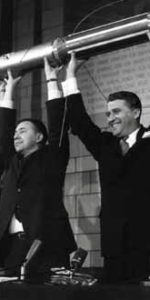
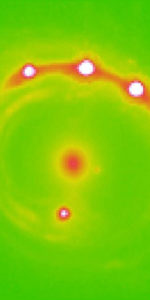
WHY SEND A CAR WHEN HE COULD MAKE IT A PROFITABLE MISSION HE ALREADY HAS ALL THE REQUIRED FLIGHT CERTIFICATIONS FORM NASA FAA AND GOVT SO DROP IN A SATELLITE AND GO FROM THEIR IN ANY EVENT GO SPACEX AND THANK YOU MUSK FOR YOUR DREAMS
Because when the odds of failure are quite this high, and generally on a launcher first use, you don’t send a payload you intend on needing later. Success or failure, in launching the measurements taken will remove uncertainty from device where the launch could not be completely simulated–the bounds of error of the simulations they could do extend to failure, however uncertain.
Just watched the launch. Took my breath away. I wonder what Buzz Adrin was thinking along with the other Apollo astronauts. Hats off and congratulations for a job well done!!!!
*Aldrin (sorry, Buzz)
Also an interesting historical perspective to compare the 27 Falcon Heavy engines with the Soviet N-1 moon rocket with 30 first stage engines. The N-1 suffered 4 launch failures before being cancelled. There was also an explosion on the launch pad completely destroying one of the two pads designated for the N-1.
To me, the interesting perspective is whether there is enough work for this launcher. I know there are a few on the manifest, but wonder if it will be a financially sustainable launch vehicle. It should be, but if it ends up at a launch cadence of 1 or 2 a year, it might start looking like a bad investment, or it might not depending on the fixed costs. The center core apparently is seriously modified and proficiency is an issue with any system in infrequent use.
We can all see how it could be used. My question is, will it?
The month started off with the launch of my annual Black History Tour; this time from Titusville, FL – new home of Priests for Life where I’m Director of Civil Rights for The Unborn. It was a blessing to visit local schools and the Titusville campus of Eastern Florida State College.